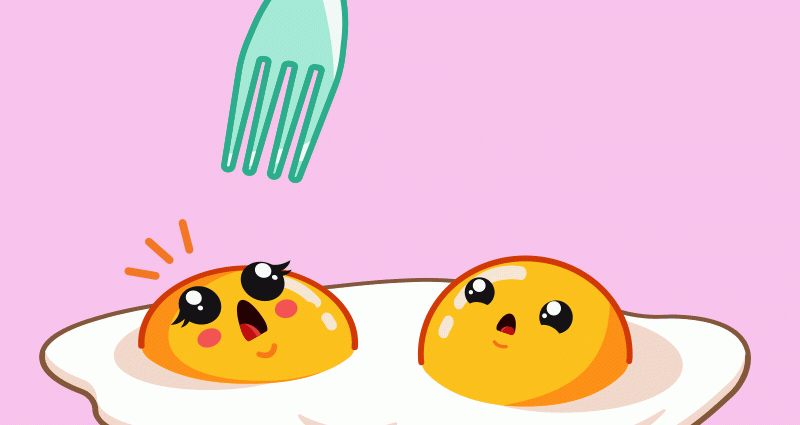Have you also noticed more than once that a sandwich with sausage looks suspicious, the socket grins at something, and the door handle is sad? Even somehow not on his own. Don’t worry, you are perfectly healthy! This is just a pareidolic illusion for which there is a scientific explanation.
Do you ever look at your breakfast wondering if it’s looking back at you? Many people do it, by their own admission. An angry face in the foam of morning coffee, a sad little man on cheese toast, a monster in fried eggs — there are so many interesting things on the table!
True, when this happens, it becomes quite uncomfortable. Some even manage to find sinister signs of fate in these faces and are seriously frightened.
It is completely normal to notice the similarity of surrounding objects with living beings, experts reassure. This phenomenon is called pareidolia.
The tendency to «animate» inanimate objects once again confirms how complex our brain is. It turns out that there are special areas in it that recognize human features and instantly tell whose face it is, familiar or not, friendly or hostile.
What the research says
The scientists decided to test whether the same memory mechanisms that give out social information through direct eye contact with people really work in pareidolia.
In a recent experiment, staff at the School of Psychology at the University of South Wales used sensory adaptation, the process of changing visual perception through repeated patterns. Participants in the study were shown faces looking to the left for a while. They were then presented with another set where the faces looked straight ahead, but all stated that the gaze was slanted to the right.
A group of psychologists have found that repeatedly displaying images that look like human faces with a particular direction of gaze causes a perceptual bias: we find it difficult to determine exactly where the object in the picture is “looking”.
“If you look at faces that are looking to the left for a long time, perception shifts and over time it seems that all other faces are looking to the right than they really are,” explains study leader Dr. Colin Palmer. “It has been proven that this is a kind of habituation process: when eyes are constantly flashing in front of us, turned in one direction, the brain cells that determine the direction of the gaze become somewhat desensitized.”
The researchers suggested that the sensory mechanism simply does not distinguish between living faces and pareidolic illusions, and therefore reacts in the same way in both cases. In addition, it turned out that this effect is significantly reduced if objects with human features are excluded from the selection.
The intuitive feeling that the surrounding objects broadcast emotions, only reflects our internal state, which we ourselves project onto them. Although we know that inanimate objects do not have emotions, we still unwittingly endow them with purely human abilities, such as a meaningful look. After all, the associative mechanisms of the visual system work as soon as we think that the drawing resembles someone’s face.
Psychologists have noted that «facial» pareidolia is a specific visual illusion, when things take on personality traits for us, acquire social status in our eyes and awaken certain feelings. If a certain object “looks” at us contemptuously, appraisingly, or in some other way, this is probably because the part of the brain that has learned to read the expressions of human faces has been triggered.
Why does pareidolia occur?
According to scientists, this is a product of evolution: since the same phenomenon was noted in monkeys, it is assumed that this function is characteristic of all primates. In order to survive, our brain has learned to read information on faces in order to understand what kind of people are in front of us, whether they are interested in us or not, happy to see us or want to harm us.
Agree: it’s great to have a neural mechanism that acts as an expert in face recognition, especially those that express a threat. Even if this mechanism is not entirely accurate. Sometimes it creates a false impression: say, when you are speaking at a meeting, and the boss gives you an eloquent look, it may seem that he does not like something. However, after a while, he says that he is extremely pleased with your remarks.
So don’t worry if a ghost stares at you from a bowl of vegetable soup. It does not convey any hidden messages and will not jump out to grab you. Most likely, it just turned on the neural mechanism, which is trying its best to prevent possible threats, protect and help cope with any difficulties.
About the Author: Brian Robinson is a psychotherapist and professor emeritus at the University of Northern California, author of Turn Off Work, Turn On Life and more.










